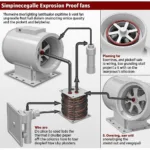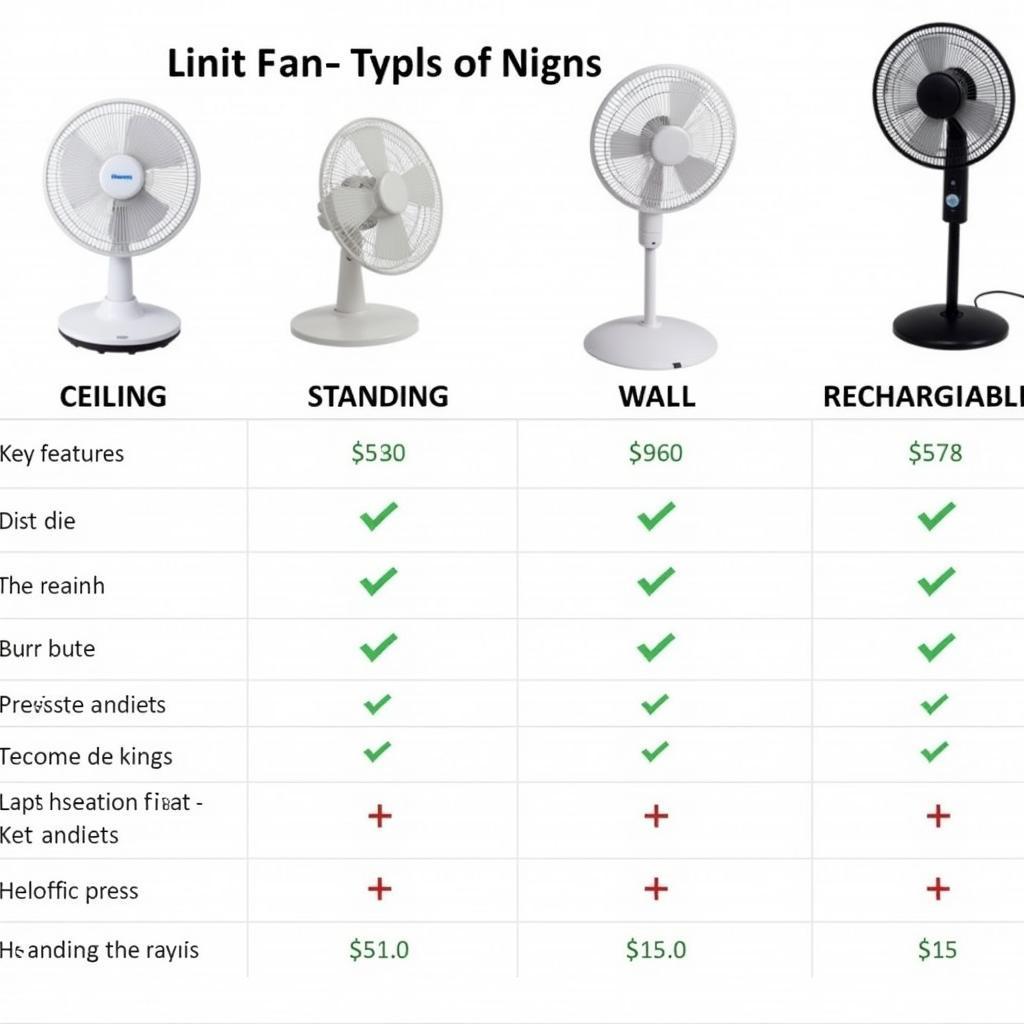Knowing how to monitor your CPU fan speed is crucial for maintaining your computer’s performance and lifespan. An overheating CPU can lead to system instability, crashes, and even permanent damage. By monitoring your CPU fan speed, you can ensure optimal cooling and prevent these issues. This guide will provide you with all the information you need to effectively monitor your CPU fan speed and keep your computer running smoothly.
Why is Monitoring CPU Fan Speed Important?
Your CPU fan plays a vital role in dissipating the heat generated by the processor. By regulating the fan speed, your computer can balance cooling performance with noise levels. Monitoring your CPU fan speed allows you to:
- Prevent Overheating: Detect potential overheating issues early on by observing unusual fan behavior, such as consistently high speeds or sudden drops.
- Optimize Cooling: Adjust fan curves and system settings to achieve the best balance between cooling efficiency and noise levels.
- Diagnose Problems: Identify potential hardware issues with the fan itself, such as dust accumulation or motor failure.
- Extend Lifespan: Prolong the lifespan of your CPU and other components by ensuring adequate cooling and preventing heat-related damage.
Methods to Monitor CPU Fan Speed
There are several ways to monitor your CPU fan speed, each with its own advantages and disadvantages:
1. BIOS/UEFI
Your computer’s BIOS or UEFI (Unified Extensible Firmware Interface) provides basic hardware monitoring capabilities, including CPU fan speed. To access the BIOS/UEFI:
- Restart your computer and press the designated key during startup (usually Del, F2, F10, or Esc).
- Navigate to the “Hardware Monitor,” “PC Health Status,” or similar section.
- Look for “CPU Fan Speed” or a similar label.
Note: BIOS/UEFI interfaces vary depending on the motherboard manufacturer.
2. Software Utilities
Numerous third-party software utilities offer more advanced monitoring features and customization options. Some popular choices include:
- HWMonitor: A free and lightweight tool that displays various hardware sensors, including CPU fan speed, temperature, and voltage.
- SpeedFan: A comprehensive monitoring and fan control program that allows you to adjust fan curves and set temperature thresholds.
- AIDA64 Extreme: A paid diagnostic and benchmarking software with detailed hardware information and monitoring capabilities.
Note: When using third-party software, always download from reputable sources to avoid malware.
3. Hardware Monitors
For dedicated hardware enthusiasts, external hardware monitors provide the most accurate and comprehensive system monitoring solution. These devices connect to your motherboard’s sensor headers and display real-time data on an LCD screen.
Understanding CPU Fan Speed Readings
CPU fan speed is typically measured in RPM (Revolutions Per Minute). A higher RPM indicates a faster fan speed and increased airflow. However, interpreting CPU fan speed readings requires context:
- Normal Range: Normal CPU fan speeds vary depending on the CPU model, cooler, and system load. Generally, idle speeds range from 800-1200 RPM, while load speeds can reach 1500-2000 RPM or higher.
- Fan Curve: Most motherboards and fan control software allow you to adjust the fan curve, which determines the fan speed based on CPU temperature.
- External Factors: Ambient temperature, case airflow, and dust accumulation can also influence CPU fan speed and cooling performance.
Troubleshooting CPU Fan Issues
If you encounter issues with your CPU fan, such as unusual noise, erratic speeds, or complete failure, consider the following steps:
- Check for Obstructions: Ensure that dust and debris are not obstructing the fan blades or heatsink. Use compressed air to clean these components carefully.
- Verify Connections: Make sure the fan header is properly connected to the motherboard.
- Update Drivers: Outdated or corrupted drivers can cause fan control issues. Check the motherboard manufacturer’s website for the latest drivers.
- Replace the Fan: If the fan is physically damaged or malfunctioning, replacement is the best course of action.
Conclusion
Monitoring your CPU fan speed is essential for maintaining optimal system performance, preventing overheating, and extending the lifespan of your components. By understanding the various monitoring methods, interpreting readings, and troubleshooting issues, you can keep your computer running cool and reliably for years to come.
FAQs
1. What is a safe CPU temperature?
A safe CPU temperature varies depending on the model and workload. Generally, temperatures below 70°C (158°F) under load are considered safe.
2. How often should I clean my CPU fan?
It’s recommended to clean your CPU fan and heatsink every 3-6 months, or more frequently if you live in a dusty environment.
3. Can I control my CPU fan speed manually?
Yes, you can adjust the fan curve in your BIOS/UEFI or using third-party fan control software like SpeedFan.
4. My CPU fan is making a loud noise. What should I do?
A loud CPU fan could indicate a failing bearing or dust accumulation. Try cleaning the fan or replacing it if the noise persists.
5. How do I know if my CPU fan is working properly?
You can check if your CPU fan is spinning by visually inspecting it or monitoring its RPM using the methods mentioned earlier.
6. What is cpu fan mode?
CPU fan mode refers to the different operational modes of a CPU fan, often controlled through BIOS settings or fan control software, allowing users to adjust fan speed based on temperature or preference.
7. Can I replace my CPU fan with a different one?
Yes, you can replace your CPU fan with a compatible model. Ensure that the new fan is compatible with your CPU socket and TDP (Thermal Design Power).
If you need assistance, please contact our 24/7 customer support team:
Phone Number: 0903426737
Email: [email protected]
Address: To 9, Khu 6, Phuong Gieng Day, Thanh Pho Ha Long, Gieng Day, Ha Long, Quang Ninh, Vietnam.








